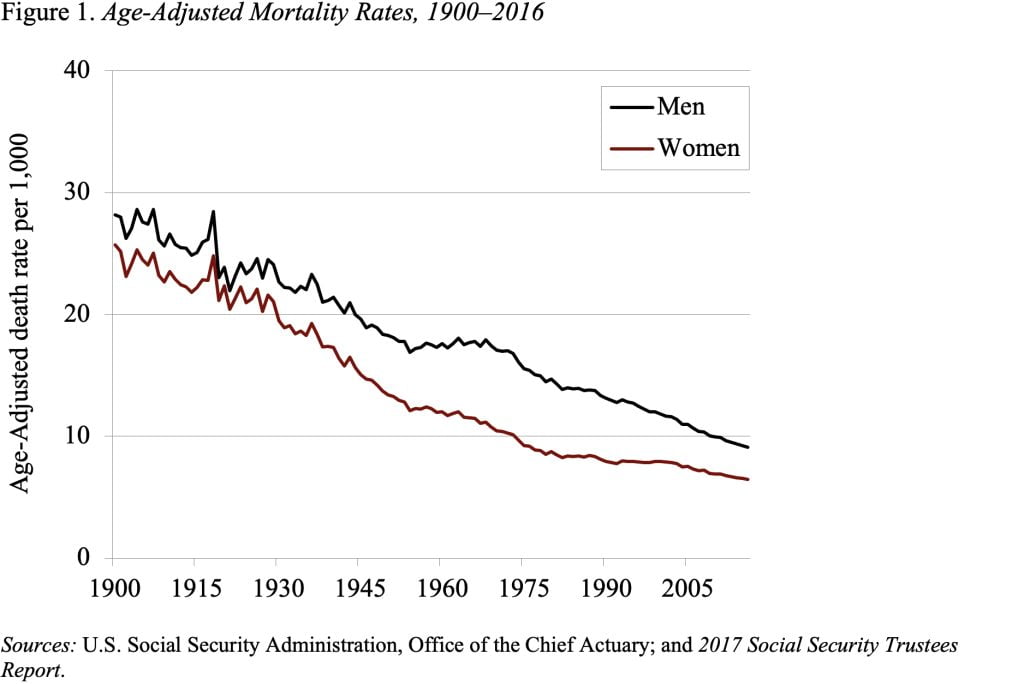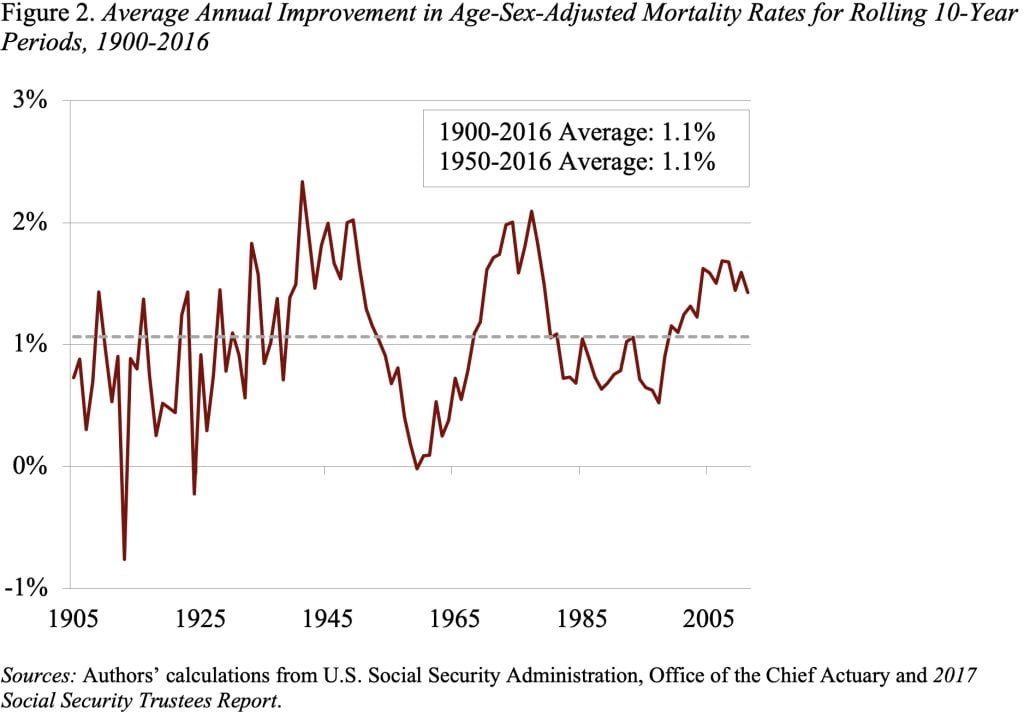
How Have U.S. Mortality Rates Changed Over Time?
Alicia H. Munnell is a columnist for MarketWatch and senior advisor of the Center for Retirement Research at Boston College.
Mortality has regularly improved, but the pace of the gains fluctuates significantly.
Before the holidays, we talked about how U.S. mortality improvements have fallen behind other high-income countries so that the United States is now at the bottom of that group in terms of life expectancy. It is also interesting to look at how the rate of mortality improvement in the United States has varied over time.
Figure 1 shows the U.S. “age-adjusted” mortality rate from 1900 to the present. In 1900, about 28 men out of 1,000 died in a given year; by 2016 that number had dropped to 9. Mortality rates have always been higher for men than for women, although the gap appears to be narrowing in recent years. With the notable exception of the flu pandemic in 1918, mortality rates have generally dropped year after year.

The question of interest is the pace at which mortality rates decline – rapidly or slowly. Figure 2 shows the annual improvement in mortality rates for men and women combined since 1900. Two points are worth noting. First, the rate of change varies significantly over time. Second, we are currently in a downward part of the cycle today.

Looking at the most recent period between 1975 and 2016, the pattern of declining, then increasing, and now declining rates of mortality improvement could be explained as follows:
- Declining mortality improvement between 1975 and 1989. This period could be characterized as one in which the new drugs and technology for heart disease and stroke identified in the 1970s and 1980s were only beginning to have a positive effect and the impact of male smoking two or three decades earlier continued to have a negative effect on mortality improvement. Further, the initial surge in mortality improvement due to the introduction of Medicare and Medicaid had petered out.
- Rise in mortality improvement between 1990 and the mid-2000s. On the favorable side, the new drugs and technology became more universal and the decline in male smoking began to have a favorable impact. In addition, the decline in female smoking had a positive effect in the 2000s. At the same time, improvements were tempered by the rise in obesity.
- Decline in mortality improvements since 2005. The decline could be attributed to the exhaustion of the positive effects of the cardiovascular drugs and technology. That is, once everyone at risk of heart disease is already taking a statin, further dissemination cannot increase the rate of mortality improvement. Similarly, the gains from the decline in male smoking have mostly run their course, although the gains in the decline in female smoking continue. And the negative effects of obesity are hampering improvements in mortality.
The question is whether recent fluctuations say anything about mortality projections over the next century. Will the future mirror the past, with mortality rates of improvement fluctuating around the long-term rate of about 1 percent per year, or are the big gains behind us, with mortality improving less rapidly in the future? It matters!







